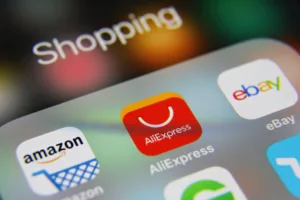By Ian Moore, founder of Excellent Zephyr
According to new research, brands that incorporate gamification into their customer engagement strategies see a 47 per cent rise in engagement, a 22 per cent rise in brand loyalty and a 15 per cent rise in brand awareness.
With the value of the global gamification industry forecast to reach $30bn by 2025, and with its use in the retail sector accounting for the lion’s share of this growth, retailers are increasingly keen to get a share of and benefit from this opportunity.
With this in mind, how can retailers implement gamification strategies in their business? And what retailers are successfully gamifying customer experiences to heighten engagement and entice them to return for more?
A closer look at gamification
First, let’s take a closer look at gamification. Gamification can be defined as the application of game elements and principles to non-game contexts. When retailers use gamification, they tap into the human impulse to win and be rewarded and engaged. Gamification fits very naturally into the retail environment; when customers search for a product it feels like a treasure hunt, and using a discount code to gain rewards feels similar to totting up scores on video games. What’s more, reading and leaving reviews feels like talking to other players. Gamification can have the effect of surprising and delighting customers, heightening engagement, and fostering relationships. It is a powerful tool that can be used to make customers happy; by offering rewards such as discounts, customers feel valued, and are more likely to return.
To give them the best chances of success, here are five key steps for retailers to follow as part of their gamification strategy:
- Keep it simple and maximise long-term engagement
Retailers should avoid getting caught up in too many details. They should focus on what will resonate best with their target audience. Make sure the idea focuses on long-term engagement, not just on generating an initial buzz.
The European sneaker marketplace, Klekt, puts simplicity and customer loyalty at the heart of its gamification strategy. To stand-out in the busy Black Friday shopping period last year, Klekt centred its campaign around a simple yet effective wheel of fortune. The campaign had a long- term view – when a customer made a purchase, they were sent an email inviting them to spin the wheel with the chance to win a discount code for their next purchase. A simple yet engaging raffle idea was implemented last Christmas – customers could win a range of prizes such as mystery sneakers or credit on the website. Both campaigns encouraged valuable engagement from customers after they ended – for Black Friday, 1,600 codes were claimed within a month, of which 16% was a second order, and an impressive 54 per cent of their customers were still engaged almost 12 months after the launch of the Christmas campaign.
2. Pull on heartstrings
With 99 per cent of all purchase decision-making taking place due to an emotional connection, retailers should make sure their gamification ideas connect with an audience on an emotional level. Iconic British fragrance and beauty brand, Molton Brown, did this well when it expanded on the story of Poppy the naughty fox terrier pup from its festive ad campaign ‘One Vintage Night’, bringing it to life on digital by challenging users to help reunite Poppy and her owner in time for Christmas. Channelling the festive feel-good factor, it engaged the audience by pulling on their heartstrings while helping Molton Brown build its database as customers entered emails to both claim their prizes or be given extra chances to win.
3. Focus on data collection
Gamification is a great opportunity for collecting customer data – by creating playable experiences brands can collect missing data points and build richer and more accurate marketing contacts and customer profiles.
The international fashion brand from Copenhagen, Masai Clothing Company, ran an engaging personality test, asking customers questions about clothing fit, preferred shape and style, and what they dressed in to accentuate and accommodate. Based on this, respondents received information about their ‘shape’ with detailed outfit colour, style and pattern matches. Not only did the personality test engage customers and entice them to come back for more, it also gave Masai invaluable insights into customer preferences and purchase intentions. The premium beauty and skincare brand, Trinny London, collects valuable data on customer skincare and beauty routine preferences via its engaging interactive ‘Match 2 Me’ quiz. The innovative, yet easy to follow, online tool delivers transformative makeup and skincare routines personalised to each customer.
Quizzes and interactive experiences are also a great way to make product searching less overwhelming for customers. Beauty brand, Dr. Barbara Sturm, makes the often daunting task of cosmetics packing for holiday, fun, simple and engaging with its ‘Build your travel routine’ interactive experience.
4. Introduce a challenge
Retailers should appeal to customers’ competitive natures by introducing an element of challenge into their gamification. Karl Lagerfield ran a much-loved game on their site which featured the founder’s cat, Choupette – not only did it engage existing customers, by encouraging them to interact with Lagerfield’s famous female companion, but it asked users to both enter their details to take part in a prize draw, and share their score to challenge their friends.
Retailers should also consider introducing an element of challenge that is tailor-made to their customers as well as directing them to where they want them to go on their site or in their store. By personalising the experience, customers feel valued and appreciated and are more likely to come back for more.
5. Embrace technology
Not only should retailers experiment with innovative technologies such as AR tech to enrich gamification and enhance customer experience, but they should also consider working with a third party agency to ensure they have all the tech and digital systems in place across the entire business. Working with one agency to deliver an all-in-one tech solution including gamification, loyalty programmes, online stores, payment services and logistics, and more. This delivers an end-to-end retail experience that is not only convenient, but also ensures business processes are as seamlessly integrated, aligned and synched as possible.
Games to keep customers coming back for more
Whether a retailer is running an online business or a physical retail store, offering a gamified app and website to join in on the fun will undoubtedly keep customers coming back for more. By turning their typical marketing efforts into a game, not only can retailers vastly improve shopping experiences, but they can also attract new customers, retain existing ones, and collect valuable data and insights on customer preferences and behaviour. This will help improve products and sales, and in turn, boost revenue.







